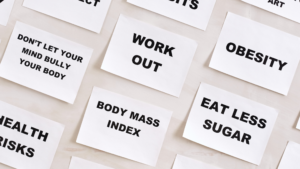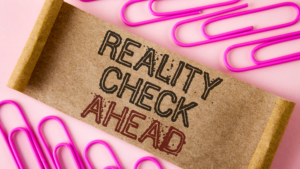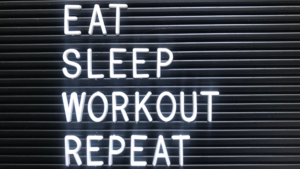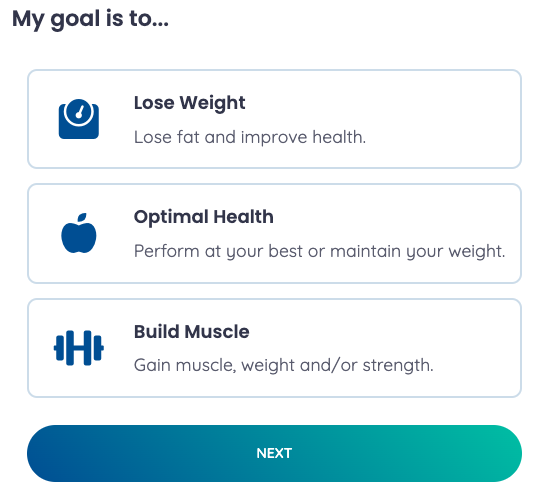Alright, you cool cats – this is part 6 of what I have officially decided to be a 7 part series. In these final two sections, we will wrap things up by talking about how we can support our modern teenage brain to modify our habits and increase our cognitive capacity. If you are not sure what I am even talking about in that last sentence, you definitely need to check out parts 1 through 5 in our blog and our YouTube channel!
Now I won’t bullsh*t you this is the hard stuff. It is no easy feat to change our habits and to increase our cognitive capacity. If it were, you and I wouldn’t be here right now. You would have changed your habits, managed your weight, and currently be skipping in a field with unicorns and leprechauns. While there will likely be a few unicorns and leprechauns prancing around during some upcoming Halloween celebrations, I can assure you they are not real. So unless you know them, I don’t recommend skipping in a field with them.
Habits – who needs them?
 Habits are a fickle pain in the ass. But, as I have said before, they serve a very important role in our lives and have been vital to the survival of the human race. They allow us to essentially automate the remedial tasks and problems that we regularly encounter to free up cognitive capacity to solve more complex problems and challenges. Remember my managing stress example? To deal with stress, some people eat chocolate, and others go for a run. Both strategies solve the problem of stress, but one strategy may have better health outcomes for us in the long term than the other. And that is the difference between an effective and ineffective habit.
Habits are a fickle pain in the ass. But, as I have said before, they serve a very important role in our lives and have been vital to the survival of the human race. They allow us to essentially automate the remedial tasks and problems that we regularly encounter to free up cognitive capacity to solve more complex problems and challenges. Remember my managing stress example? To deal with stress, some people eat chocolate, and others go for a run. Both strategies solve the problem of stress, but one strategy may have better health outcomes for us in the long term than the other. And that is the difference between an effective and ineffective habit.
So the basic structure of a habit is as follows; if you want a more detailed breakdown of all things habits and how to start changing them, I recommend the books The Power of Habit by Charles Duhigg and Atomic Habits by James Clear. And please note: this will not be all-encompassing of how to modify and change your habits. I would need a whole other 10-part masterpiece series to go through all the literature in that regard.
Structure of a Habit
There is an environmental cue such as walking in the door from a stressful day at work. The behaviour is then raiding the pantry for a bag of chips. The reward is not only eating the glorious chips but also feeling more relaxed and less stressed. Now, this is just a brief example and everyone is going to be different, and the structure of your habits will also be different. Sometimes the reward and cue are not clearly identified, and that is ok. By having this knowledge of what makes up a habit, you can start identifying them in your own patterns and behaviours.
Now that we know the structure of a habit, how can we influence our less effective habits?
Find your cue
 People often start by trying to change their behaviour. So after walking through the door from work, they try to do something else or have a salad instead of chips. While noble and might work for some, when has a salad ever reduced anyone’s stress level? A better place to start is figuring out your cue.
People often start by trying to change their behaviour. So after walking through the door from work, they try to do something else or have a salad instead of chips. While noble and might work for some, when has a salad ever reduced anyone’s stress level? A better place to start is figuring out your cue.
Is it the act of walking through the door? Maybe it is opening the garage door? Or perhaps it is back at your workplace itself? Regardless, modifying your cue essentially shuts down that habit from even occurring in the first place. You see, for a habit to occur, all 3 of the above components need to be present, but if the cue is never presented in the first place, your brain will not spike your dopamine levels in anticipation of a potential reward. No anticipation, thus no WANTING, therefore no behaviour to get said reward.
We all know the story of Pavlov’s dog – the dog that associated food with the ringing of a bell. When there was no bell, there was no cue; therefore, no dog drooling all over the floor.
Be realistic and practical
 So that all seems simple enough. Just remove or alter the cue, and bam!, the habit doesn’t occur, and all your life problems are solved. Well, as I said above, it is not always easy to identify the cue, and it is also not always easy to just change your cue. Do I never go to work again so that I never come home from a stressful day at work? Or how do I never walk through the door of my house again?
So that all seems simple enough. Just remove or alter the cue, and bam!, the habit doesn’t occur, and all your life problems are solved. Well, as I said above, it is not always easy to identify the cue, and it is also not always easy to just change your cue. Do I never go to work again so that I never come home from a stressful day at work? Or how do I never walk through the door of my house again?
Obviously, neither option is very easy or practical, and it also assumes the process of walking through the door is your cue. So first identifying your cue will be key, then brainstorming how you can alter it will come next. It might be as simple as walking through a different door to your house when you come home, or instead of walking inside immediately after parking your car, you throw on your runners and go for a walk.
Now on the flip side, we don’t necessarily need to change old habits and behaviours. We can instead implement new ones. For example, if you want to implement the behaviour of ‘lifting weights’ and you currently do not go to a gym or have weights at home, suddenly going from nothing to lifting weights for an hour 4x/week is a huge leap.
There will be so many changes and things you need to incorporate into your life, such as allocating time in your day, going to get a gym membership, packing gym clothes, adjusting your bedtime, or evening routine. You are not just throwing a wrench into your proverbial engine; you are throwing a grenade into that engine and waiting for it to blow up.
For 99% of people, this ambitious goal will be nothing more than a smoking pile of ashes after a week. So instead of grenades, let’s maybe put in a bad spark plug. The engine will still run, just not as efficiently, but we can worry about that later. Start by just showing up to the gym or going for a walk at a pre-specified time which might be your eventual gym time. Start small and easy.
Remember, your brain is composed of a whiny teenager and a stubborn old man. Do you think either of them wants to work very hard?! Hell no! But if you subtly get them off the couch and move a little more, they might be a little annoyed at first, but they might start enjoying or at least expecting to go for a walk or show up at the gym. What will likely happen is they will get inspired to do a little more.
‘We are here now; might as well do something!’
Repetition is key
 Once that ball is rolling, if you repeat it enough times, it will start to become automatic. Then you can start building upon it from a 20-minute session 1x/week to a full hour of lifting weights 4x/week. How many times until that happens? We don’t know exactly. There isn’t some mystical number of times then, bam!, your brain does it automatically. It takes repetition using a lot of brainpower at first, then over time, less effort will be necessary to make the behaviour happen UNTIL it becomes automatic. This is going to be different for everyone!
Once that ball is rolling, if you repeat it enough times, it will start to become automatic. Then you can start building upon it from a 20-minute session 1x/week to a full hour of lifting weights 4x/week. How many times until that happens? We don’t know exactly. There isn’t some mystical number of times then, bam!, your brain does it automatically. It takes repetition using a lot of brainpower at first, then over time, less effort will be necessary to make the behaviour happen UNTIL it becomes automatic. This is going to be different for everyone!
The final piece I want to talk about here is planning for life. Because as much as you are well-intentioned in creating habits around lifting weights, reducing your snacking, or ensuring that you read my weekly blog post (seriously though – if you enjoy my writing tell your friends or if you hate it let me know and don’t tell your friends, cool?!). Anyways, life never stops.
Life doesn’t just take a vacation while you work on your habits. No, life will always be there to sh*t on your progress at the perfect time. So we need to plan for it. We need to at least consider what we are going to do when things go wrong. Forgot your gym bag at home? Ok, cool; maybe instead of weights, we go for a walk when we get home. Forgot to pack your healthy lunch? What are some healthy take-out options we can go for instead of the pizza joint down the street?
If you live in Canada like me, it is guaranteed there will be a massive snowfall or two and the temperature will reach Arctic levels at least for a week in February. So will our outdoor workouts be feasible? Do we have a thick enough parka? Or do we have indoor workouts planned for those periods? As the old adage goes:
Baby steps are not a bad thing
So motivating your teenage modern brain to create new habits is a process. It takes time, practice and continued effort. Despite all the planning in the world, you are still going to fail. That teenager is not just going to get off the couch and find a job, but that is ok. It is a learning opportunity to figure out what we can do differently next time. Maybe instead of a broom handle, you pick up an actual cattle prod, or you cut off their allowance? It will be painful, and sometimes it will downright suck, but that is the beautiful thing about life – we have the opportunity to continuously learn and try again. Fundamentally, this is what brings us fulfillment and joy in life. Reaching our goals is great but continually solving life’s challenges and moving on to better life challenges is where the magic really happens!
Ok, that is part 6, you beautiful people. A little longer than I was expecting, hence why I chose to wrap this series up in 7 parts! The final part of this series will be delving into how to increase our cognitive capacity to make all the crap I reviewed in parts 5 and 6 more manageable!
As always, remember small tweaks lead to massive peaks!






